 Kobe Kanteibyo Kobe Kanteibyo
神户关帝庙
 In 1887, the overseas Chinese community in Kobe, Japan established the Kobe Kanteibyo, 神户关帝庙, a Chinese temple dedicated to Guan Yu, 关羽the famous Chinese warrior from the Three Kingdoms period and who is known to the Japanese as Kan-u. In 1887, the overseas Chinese community in Kobe, Japan established the Kobe Kanteibyo, 神户关帝庙, a Chinese temple dedicated to Guan Yu, 关羽the famous Chinese warrior from the Three Kingdoms period and who is known to the Japanese as Kan-u.
The founding of Kobe Kanteibyo was the result of an increase in the Chinese population after the Japanese opening of treaty ports in 1868. Kobe Kanteibyo function as a focus point for the Chinese population and address their religious, social and cultural needs even to this day. The importance of Kobe Kanteibyo is reflected in its expansion as well as in its successful restoration whenever it was damaged.
As a temple dedicated to Guan Yu, his sculpture occupies the main shrine. Next to Guan Yu are his son Guan Ping 关平and assistant Zhou Cang 周沧. The shrines to the left and right (from devotee’s perspective) are dedicated to the sea goddess Mazu 妈祖and Bodhisattva Guan Yin 观音.
Over the years, more sculptures were sponsored by devotees thus increasing the number of deities. The new sculptures included the earth deity Fude, 福德正神 and Lu Zu (Lu Dong Bin, 呂洞宾) one of the Eight Immortals and progenitor of Taoist Quanzhen School.
On 5 June 1945, Kobe Kanteibyo was destroyed by the Allied bombing during WW2. Twenty two years later on 16 January 1977, it was destroyed by fire and in January 1995, it was damaged during the Kobe earthquake. Each time it was destroyed, the local community came together to rebuilt it. The last restoration was officially completed on 14 February 1999.
The importance of Kobe Kanteibyo and its rituals did not go unnoticed by the Kobe population. In 1992, the rituals during the Hungry Ghost festival were designated as Kobe (Japan) City Community Folklore Intangible Cultural Asset. This is probably the first instance in the world where rituals of the Hungry ghost Festival is recognized as a cultural asset.
Other events celebrated at Kobe Kanteibyo include the Chinese New Year, Mid Autumn Festival and the birthday and commemorative dates of various deities.
Located close to the Kobe Chinatown, Kobe Kanteibyo is also one of the top tourist attractions in Kobe.
The founders of Kobe Kanteibyo probably never imagined how a temple founded to serve the local Chinese population would have evolved into a major tourist attraction and its rituals designated as the city’s intangible cultural asset. To Chinese visitors, it helps to serve as a reminder to cherish, to learn and to be proud of their own cultural traditions.
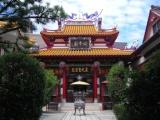 Kobe Kanteibyo Kobe Kanteibyo
神户关帝庙
Address
Sannomiya and Motomachi area, Kobe |
Related articles:

|

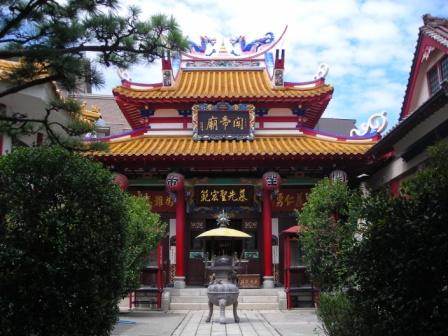
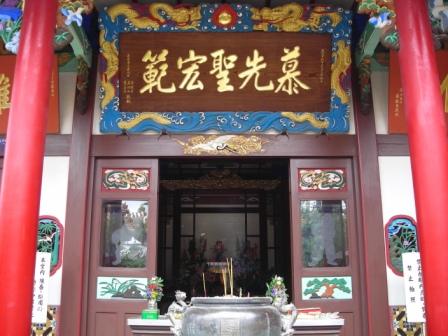
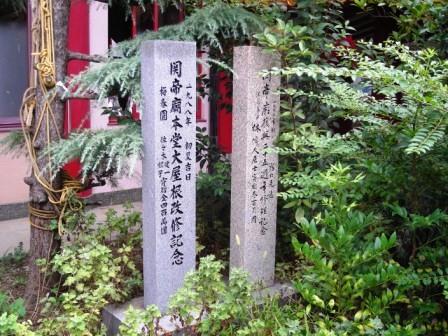

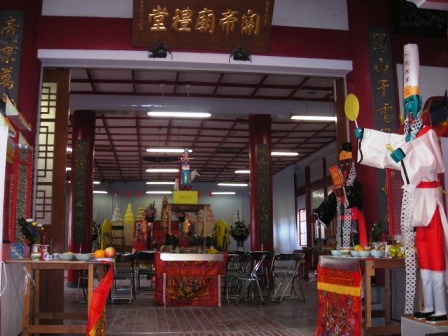
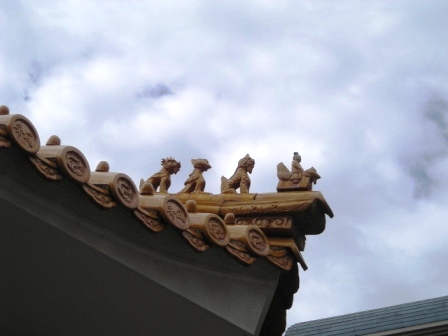
 Kobe Kanteibyo
Kobe Kanteibyo 
 Kobe Kanteibyo
Kobe Kanteibyo